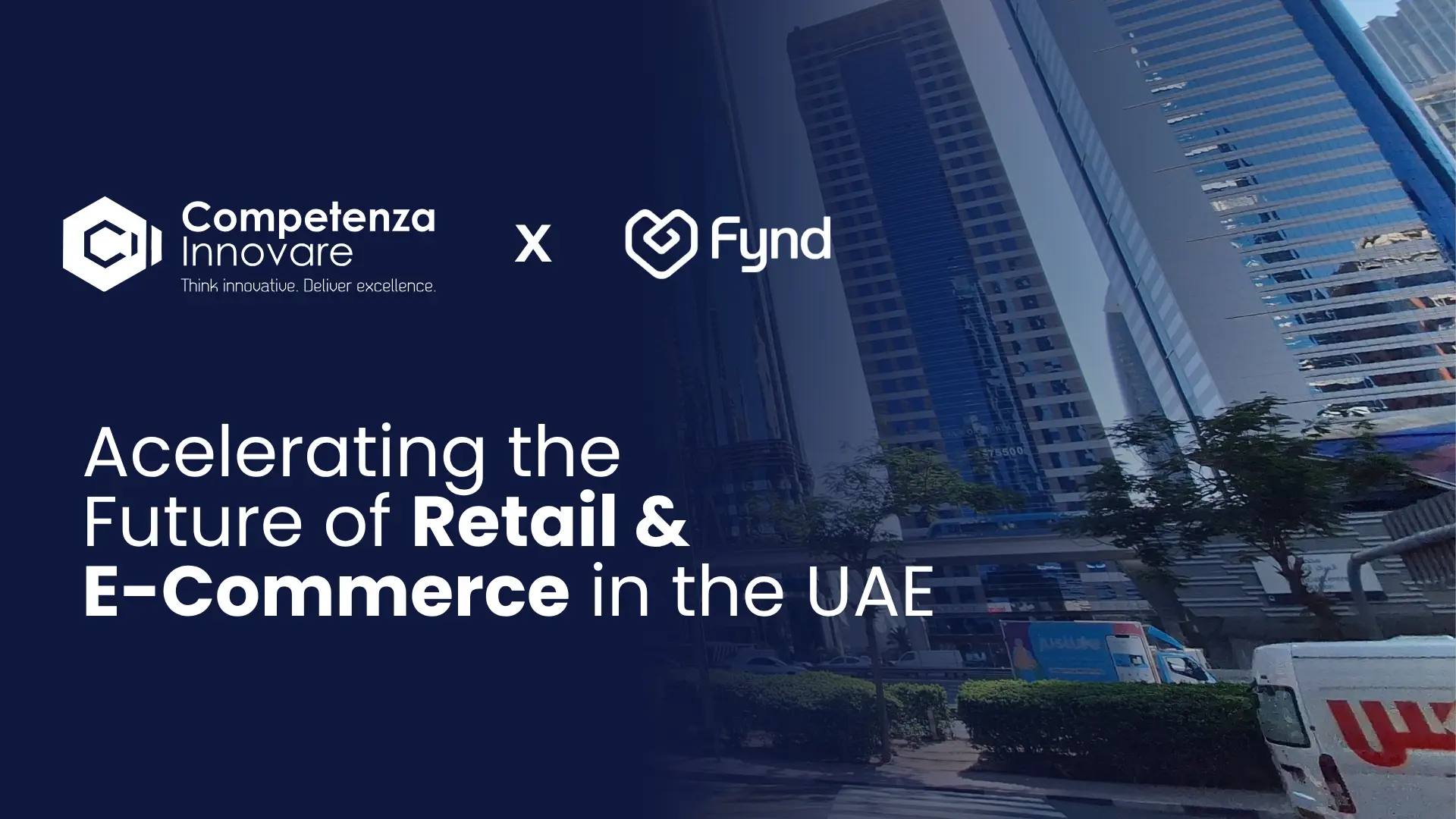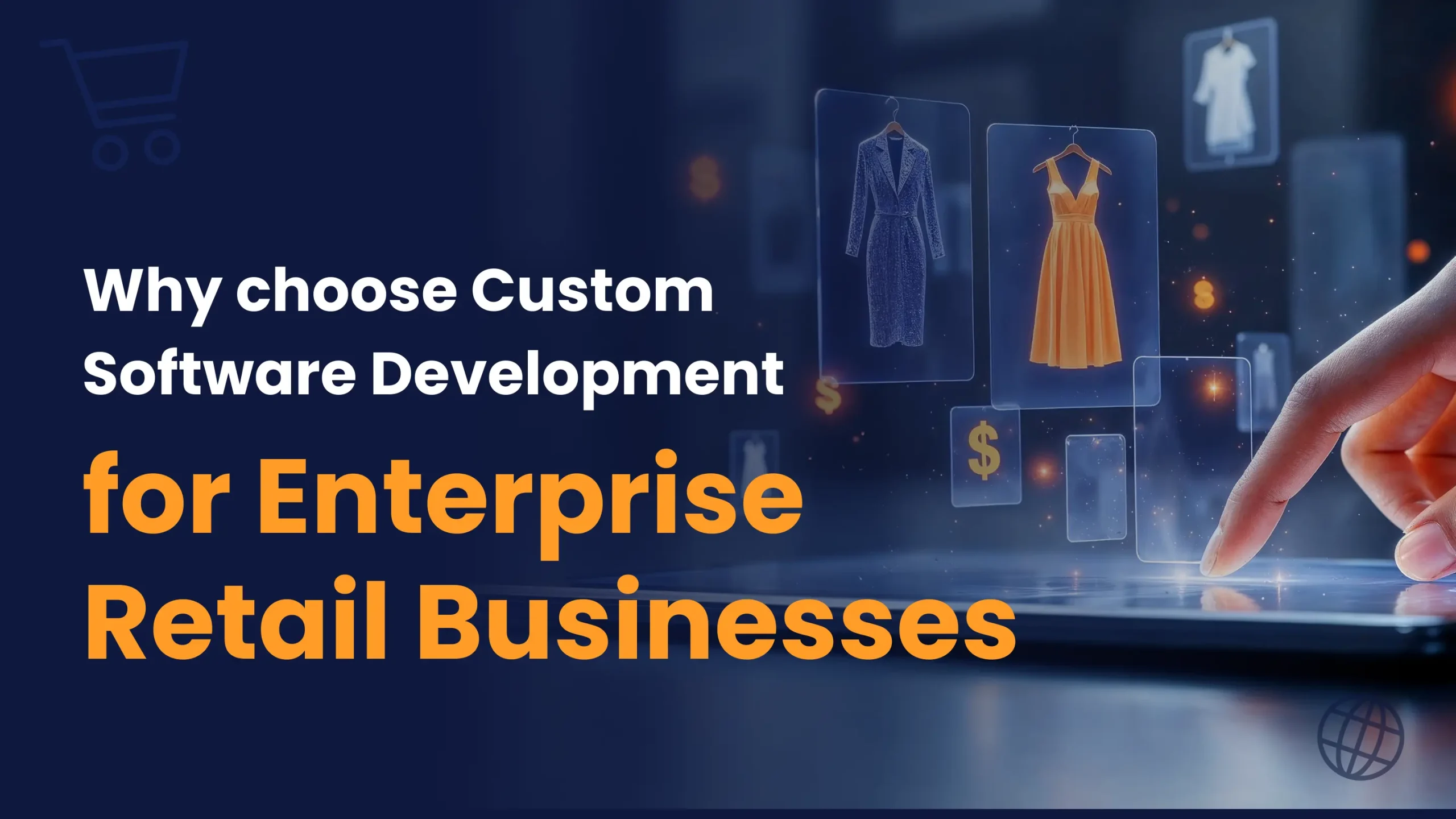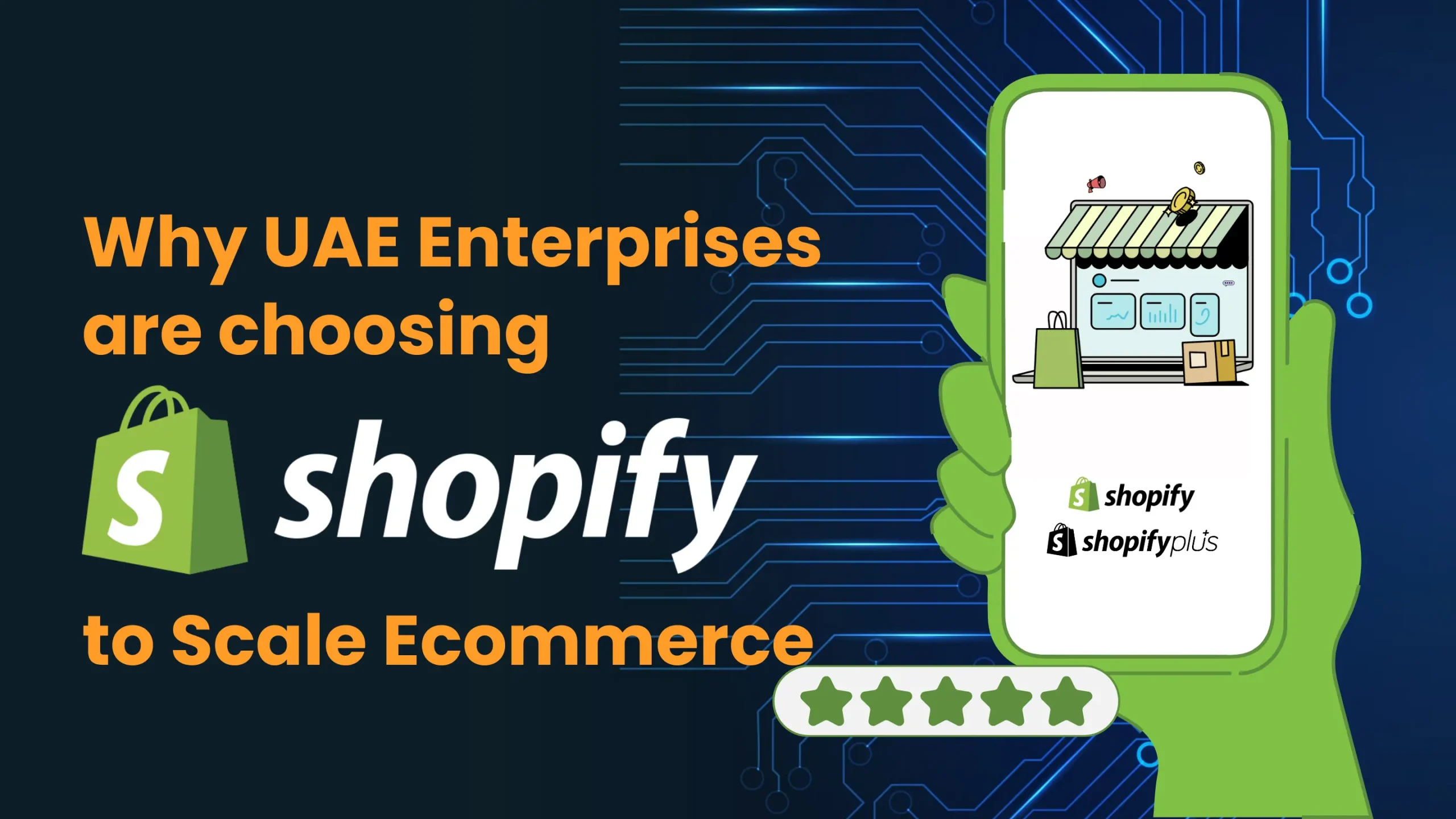Contents
- 1 At A Glance
- 2 Introduction: Overview of Enterprise E-Commerce in the GCC
- 3 Current State and Market Dynamics for GCC Enterprise E-Commerce
- 4 Government Initiatives Shaping Enterprise E-Commerce in the GCC
- 5 Key Technologies Powering Enterprise E-Commerce Platforms
- 6 Regulatory Compliance and Data Residency Requirements
- 7 Logistics and Fulfilment Strategies for Enterprise Scale
- 8 Emerging Trends in Enterprise E-Commerce for the GCC
- 9 Enterprise E-Commerce Best Practices And Recommendations
- 10 How Competenza Can Help Shape Your Enterprise E-Commerce Business
- 11 Conclusion: Building the Future of Enterprise E-Commerce in the GCC
- 12 FAQs
At A Glance
- Enterprise e-commerce in the GCC is projected to exceed $50B by 2025, with high adoption across retail, FMCG, automotive, luxury, and B2B distribution sectors.
- Headless commerce, microservices, and cloud-native platforms are replacing legacy monoliths, enabling regional brands to scale across markets and channels.
- Regulations like PDPL (UAE) and SACA (KSA) are making data localisation, consent management, and audit trails core to platform architecture.
- Logistics strategies are shifting toward micro-fulfilment, last-mile automation, and reverse logistics, driven by customer SLAs and cross-border complexity.
- Organisational success now depends on enterprise architects, DevOps, UX, and data roles, along with upskilling and change management initiatives.
- AI, AR/VR, and social commerce are emerging priorities for brands building immersive, personalised, and mobile-first shopping experiences in the GCC region.
Introduction: Overview of Enterprise E-Commerce in the GCC
Enterprise e-commerce in the GCC has shifted from a growth opportunity to operational necessity. What started as a fast-moving B2C trend is now a foundational pillar for regional giants in retail, automotive, FMCG, and B2B.
With e-commerce expected to surpass $50 billion by the end of 2025 (Gulf Business, 2024), enterprises that once treated online sales as a parallel function are now re-architecting entire business units around digital commerce. But unlike global markets, the GCC presents a complex landscape shaped by multilingual requirements, cross-border tax regimes, fragmented logistics, and emerging data laws.
Enterprise platforms that fail to scale across these realities are not just inefficient — they’re unsustainable. Consumers in the region are mobile-first, expect delivery predictability, and increasingly interact across channels (online, in-app, in-store). Governments, meanwhile, are rapidly enforcing standards for data protection, digital invoicing, and locally hosted systems.
In this context, enterprise leaders must rethink how their e-commerce systems are designed, governed, and grown. Moving forward means aligning architecture with compliance, UX with localisation, and fulfilment with operational scale.
Current State and Market Dynamics for GCC Enterprise E-Commerce
The GCC’s enterprise e-commerce landscape has evolved rapidly — but unevenly. While the region has seen a surge in digital consumer adoption, many enterprise platforms remain stuck in phase-one ecommerce models that can’t handle cross-market complexity or omni-channel expectations.
Sector Breakdown: Retail, FMCG, Automotive, Luxury, and B2B Distribution
Retail and FMCG continue to dominate digital commerce volumes, with large players investing heavily in mobile-first platforms and app ecosystems. The UAE, in particular, has become a testing ground for retail innovation, while Saudi Arabia is scaling e-grocery and quick commerce initiatives at speed.
Automotive and spare parts distribution are entering e-commerce through catalog-driven portals with ERP-integrated inventory. However, many still rely on manual quote flows, unable to serve real-time stock or support mobile buyers.
Luxury brands are building gated e-commerce experiences for GCC high-net-worth buyers, often with private client features, AR product previews, and high-touch fulfilment.
B2B distribution, especially in construction, pharma, and packaging, is increasingly moving procurement online — but platforms must support account-based pricing, credit limits, and order reconfiguration, not just B2C-style catalogues.
Omni-channel Adoption and Consumer Behaviour Shifts
Customer behaviour across the GCC is mobile-first and increasingly omni-channel:
- 67% of shoppers in the UAE and KSA now interact with both digital and physical touchpoints before purchase (PwC Middle East, 2024).
- Features like “click-and-collect,” WhatsApp ordering, and mobile payment via Sadad or Tabby are shaping expectations.
- Enterprise platforms that don’t natively support POS, loyalty, and e-commerce integrations are falling behind — especially as cross-channel return rates rise.
GCC Trade Agreements and Cross-Border Commerce
The GCC Common Market framework has reduced trade barriers across member states, but cross-border commerce still involves fragmented execution:
- Duty and VAT vary based on product category and destination country.
- Shipping regulations differ between mainland UAE and free zones like JAFZA or CommerCity.
- Saudi Arabia enforces unique data, customs, and import documentation requirements even under the GCC umbrella.
Enterprise platforms that treat each country as a separate implementation are burning time and cost. The new standard is shared backend logic with market-specific localisation — including payments, taxes, and language — built in.
Government Initiatives Shaping Enterprise E-Commerce in the GCC
Government policy is no longer just enabling e-commerce — it’s defining how it must operate. Across the UAE and Saudi Arabia, national strategies now embed enterprise-level digital commerce into their broader visions for economic diversification and private sector competitiveness.
The UAE’s Digital Economy Strategy aims to double the digital economy’s contribution to GDP within the next decade. Enterprise e-commerce is a major focus, especially through smart logistics zones like Dubai CommerCity and AI-powered customs processing. Free zones across the Emirates are offering preferential treatment for digitally native exporters, while also enforcing compliance with VAT and digital invoicing.
Saudi Arabia’s National Digital Transformation Programme has placed data localisation, fintech enablement, and e-logistics at the core of Vision 2030. Programs under the Saudi Authority for Data and Artificial Intelligence (SDAIA) are already rolling out requirements for local hosting, AI regulation, and e-commerce integration across sectors.
Customs and VAT are also being digitised. The UAE and Saudi Arabia both mandate e-invoicing, with detailed product-level declarations for cross-border trade. Some free zones now require bonded warehousing logic to be built into backend systems. If your ecommerce platform cannot generate VAT-compliant invoices in Arabic and manage customs documentation dynamically, you risk delays and penalties.
New mandates under UAE’s PDPL and Saudi’s SACA require businesses to store user data within the country, obtain dual-language consent, and enable deletion or transfer requests. These aren’t policy guidelines — they are enforceable frameworks. Enterprise platforms that don’t comply can face blocked services or legal escalation.
Key Technologies Powering Enterprise E-Commerce Platforms
Enterprise e-commerce in the GCC now requires a completely different tech stack than what many businesses deployed five years ago. Speed, flexibility, and modularity are no longer optional. They’re critical to scale.
Headless commerce is leading the shift. By separating the frontend from the backend, headless allows businesses to run different storefronts, languages, currencies, and experiences — all connected to a unified backend. For GCC enterprises, this means one system can support retail in the UAE, B2B distribution in KSA, and luxury in Qatar with minimal code duplication.
Cloud-native infrastructure is replacing legacy hosting. Deployed via containers (e.g. Docker) and orchestrated using platforms like Kubernetes, these systems ensure high availability, quick rollbacks, and seamless CI/CD pipelines. Enterprises no longer wait six months for platform updates — they ship daily.
Progressive Web Apps (PWA) are powering mobile-first growth. Especially in the GCC where 90%+ of traffic is mobile, PWA headless frontends allow for app-like speed and offline functionality — without forcing users to download anything. Combined with native mobile apps for high-intent use cases, this dual model is enabling scale without compromise.
AI and machine learning are becoming foundational. From personalising product recommendations based on purchase history and location, to automating search, pricing, and merchandising — AI is now embedded directly into ecommerce logic. This is particularly valuable in high-SKU environments like fashion, electronics, and B2B tools.
The best-performing GCC platforms now run on composable architecture: headless frontends, API-first middleware, microservices for cart, search, and promotions, and cloud-native hosting for uptime and scale. It’s not cheap, but it’s the only stack that handles digital transformation 2025 is bringing.
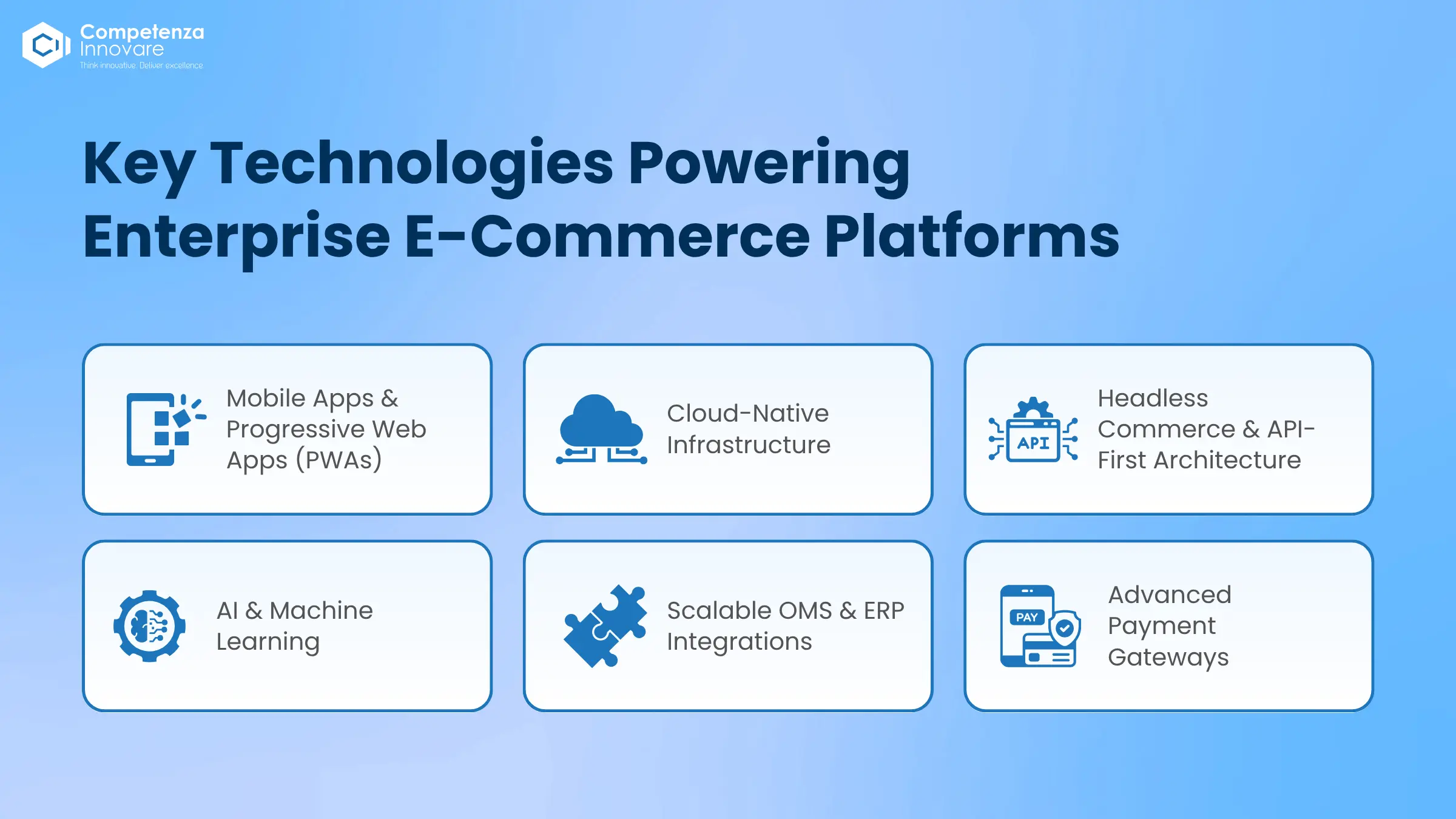
Regulatory Compliance and Data Residency Requirements
Compliance is no longer about checkboxes — it’s platform-critical. In the GCC, especially, it’s technical.
The UAE’s PDPL and Saudi’s SACA require that all personally identifiable user data (PII) be stored and processed inside the country. Enterprise systems must also offer full audit trails, encryption, access controls, and the ability to delete or export user data on request. Consent must be captured in both English and Arabic, tied to specific data categories, and refreshed when policies change.
This impacts architecture directly. Many global platforms fail compliance because their hosting is centralised in Europe or the US. Even if CDN or caching is local, if data processing or storage isn’t — the platform is non-compliant.
Payment Card Industry (PCI-DSS) compliance is another critical layer. Most GCC governments mandate PCI compliance for any platform processing payments locally. This includes tokenisation, secure vaulting, and fraud detection workflows — especially for businesses integrating BNPL tools like Tabby or Tamara.
Cross-border tax and customs handling has become more complex, not less. Each country enforces different VAT rates based on product category, customer type (B2B vs B2C), and import classification. Enterprise platforms must calculate, apply, and declare the correct tax in real time — and often integrate with e-invoicing platforms registered with local governments.
Compliance isn’t a line in a legal document. It’s code. And that code has to match the rules country by country.
Logistics and Fulfilment Strategies for Enterprise Scale
Logistics has moved from an operational concern to a strategic capability. GCC consumers expect same-day or next-day delivery, live tracking, and frictionless returns. And regulators are increasingly demanding traceability across the fulfilment chain.
Enterprise players are now investing in micro-fulfilment centres (MFCs) located within high-demand urban areas like Riyadh, Jeddah, Dubai Marina, and Doha. These centres enable rapid local dispatch, reduce last-mile costs, and unlock delivery windows under four hours — especially during peak periods like Ramadan or White Friday.
Dark stores are emerging across grocery and FMCG categories, allowing high-volume SKU operations to function purely for online orders. When connected to inventory management systems via API, they enable dynamic picking and routing based on order type, location, and courier availability.
Real-time fleet tracking and last-mile delivery optimisation are now tied directly to the ecommerce interface. Customers expect to know where their order is at every stage, and brands are judged on SLA adherence — not just product availability.
Enterprise ecommerce platforms are integrating delivery orchestration tools like Shippify, Quiqup, or Aramex into their order flow — with dispatch, ETA, reroute, and return all accessible via customer-facing dashboards.
Warehouse robotics and fleet telematics are improving efficiency, especially for high-SKU categories. Order picking accuracy and speed have become critical KPIs. Many large players are now implementing warehouse management systems (WMS) that connect directly to their ecommerce backend and 3PL providers.
Returns are no longer afterthoughts. They are built into the delivery promise. Smart systems now predefine return logic based on SKU, customer tier, region, and courier type — reducing friction, cost, and fraud.
Logistics is not a separate team. It is your ecommerce success rate.
Partnering decisions are key. Leading companies use a hybrid model: in-house teams for strategy and UX, external partners for infrastructure, development, and integration. This ensures knowledge retention while accelerating execution.
People drive platforms. Without the right skills, the best technology won’t scale.
Emerging Trends in Enterprise E-Commerce for the GCC
The most competitive GCC enterprises are already investing in next-gen capabilities. These trends are no longer hype — they’re execution paths for 2025.
Hyper-personalization is becoming mandatory. AI-driven product recommendations, search result tuning based on customer data, and dynamic promotions are improving conversion rates across luxury, fashion, and electronics.
Social commerce and live shopping are gaining traction in Saudi Arabia and the UAE, especially in beauty and accessories. Influencers now drive sales via integrated live streams, with built-in checkout and affiliate tracking.
Affiliate ecosystems are being formalised. Enterprise brands are enabling B2B partners to run co-branded storefronts, drop-shipping, or localised campaigns — managed via portal systems connected to their ecommerce backend.
AR and VR are entering high-ticket verticals. Furniture, luxury watches, and automotive are already experimenting with 3D product viewing, virtual try-ons, and environment simulation.
Immersive commerce is not a future idea. For GCC customers, it’s what’s expected from leading brands.
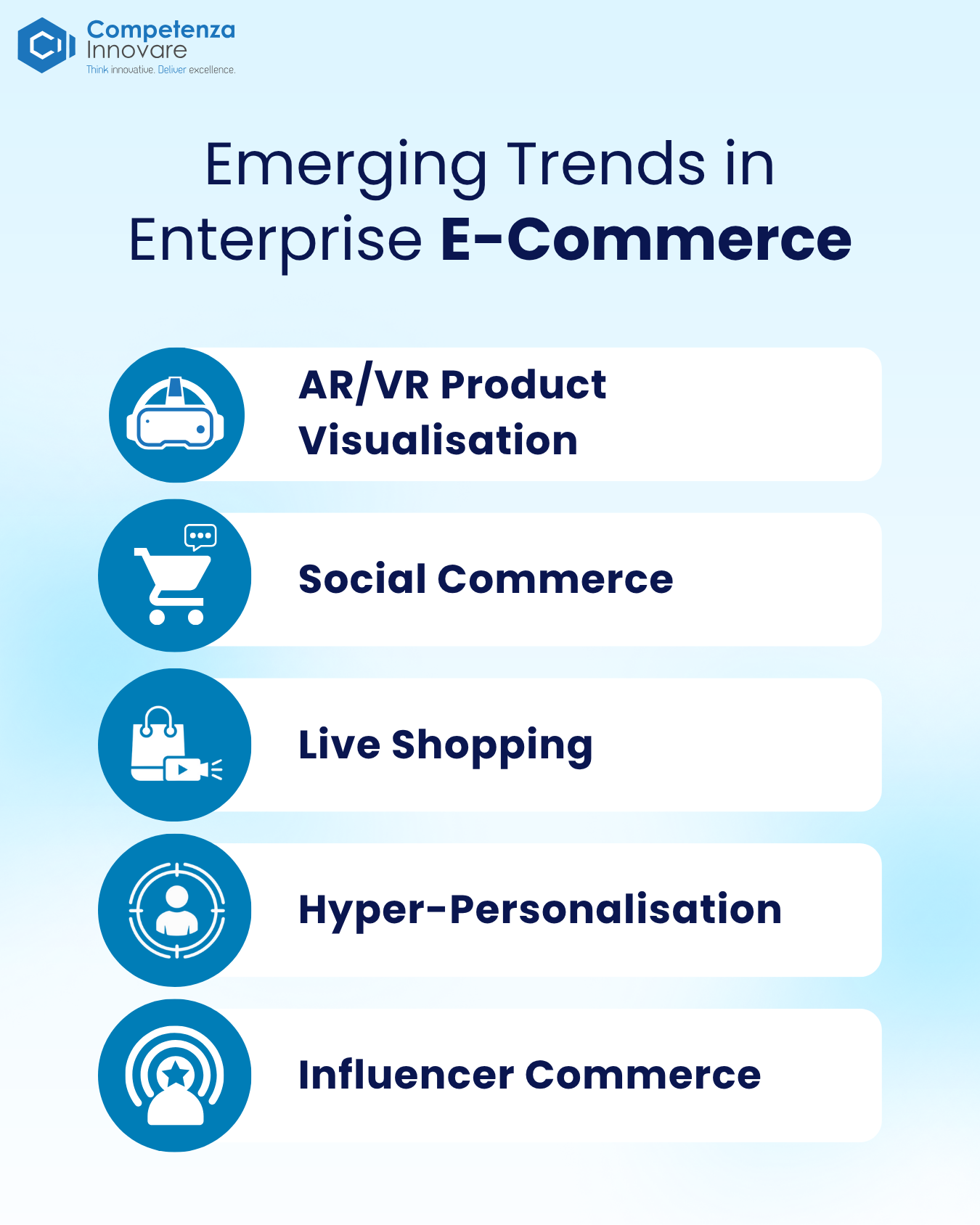
Enterprise E-Commerce Best Practices And Recommendations
Enterprise ecommerce success in the GCC requires more than just a platform. It requires architectural alignment, compliance enforcement, and cross-functional readiness.
Select platforms based on regional requirements. Headless, API-first, and cloud-native should be non-negotiable. Multi-warehouse, multi-language, and multi-currency support must be native — not plugin-based.
Design resilient systems that can adapt to regulatory changes, payment provider shifts, or peak traffic loads. Redundancy, rollback, and scaling protocols are now as important as user journeys.
Measure the right KPIs: cart abandonment, order SLA, return rate, NPS, mobile performance, and regulatory compliance gaps. Tie every metric to either revenue growth or operational cost — no vanity metrics.
Review your architecture every six months. What worked last year may not meet next year’s rules or customer expectations.
How Competenza Can Help Shape Your Enterprise E-Commerce Business
Competenza works with GCC enterprise teams to build ecommerce platforms that are regionally compliant, future-ready, and deeply integrated.
Our services include end-to-end platform design, integration, and migration across headless, microservices, and cloud-native environments. We specialise in regulatory compliance — from PDPL and SACA to PCI-DSS and cross-border VAT.
Our managed services offering ensures 24/7 support, uptime SLAs, monitoring, and continuous optimisation across infrastructure, UX, and backend logic.
We run tailored case study workshops for enterprise teams exploring luxury, FMCG, and B2B implementations — covering everything from platform selection to architecture mapping and delivery planning.
Whether you’re building from scratch or scaling an existing system, we deliver the talent, tools, and strategy to move faster — without breaking compliance or operational readiness.
Conclusion: Building the Future of Enterprise E-Commerce in the GCC
Enterprise e-commerce in the GCC is entering its maturity phase — and only those with scale-ready, compliance-aligned, and customer-centric systems will thrive. This requires coordinated investment across architecture, logistics, talent, and compliance.
The stakes are high. But for those who move now, the payoff is even higher: access to a digitally native population, regional expansion opportunities, and first-mover advantage in a market still undergoing structural transformation.
Ready to build a platform that works in 2025 and beyond? Schedule your free enterprise e-commerce readiness workshop with Competenza today. We’ll help you map the next 18 months — before the next wave of change arrives.
FAQs
What’s the best enterprise e-commerce platform for the GCC in 2025?
For most GCC enterprises, shortlist Shopify Plus, Adobe Commerce (Magento), Salesforce Commerce Cloud, commercetools (headless), or SAP Commerce Cloud. Decide based on speed-to-market, Arabic/RTL readiness, omnichannel needs, and TCO. If you want rapid rollout with strong app ecosystems, Shopify Plus shines; for complex catalogs and custom workflows, Adobe/SAP excel; for composable, API-first flexibility, consider commercetools. Align the platform to GCC payment methods, logistics, and compliance from day one.
What’s the right architecture—monolith or headless (composable) commerce?
Choose headless if you operate multiple brands/regions, need content-rich experiences, or plan frequent UI experiments across web, apps, and kiosks. You’ll gain agility (separate front-end cycles) and best-of-breed picks for search, CMS, and personalization. Prefer a monolith when your catalog and workflows are stable and teams are small—TCO and operational overhead stay lower. Many GCC enterprises start monolith, then go composable for growth markets.
What budget and timeline should a GCC enterprise plan for a new e-commerce build or replatform in 2025?
MVP (1 country, Arabic/English): 10–14 weeks; Year-1 AED 350k–650k.
Headless/composable, multi-country: 16–28 weeks; Year-1 AED 900k–2.1M.
Complex enterprise (ERP/WMS depth, marketplaces, cross-border): 24–36 weeks; Year-1 AED 1.8M–3.9M.
Run-rate after go-live (Year-2): AED 33k–200k/month for infra/tools and support/enhancements.
Use these as a planning envelope; final numbers depend on stack, regions, catalog size, and compliance (PDPL, ZATCA).
What are the critical enterprise integrations for GCC e-commerce on day one?
Prioritize the backbone first: ERP (SAP/Oracle/Microsoft Dynamics) for orders, tax, and inventory; payment gateways + BNPL (Checkout.com, Amazon Payment Services/PayFort, PayTabs, Telr; Tabby/Tamara); logistics/WMS (Aramex, SMSA, J&T) with returns/NDR reasons; VAT + ZATCA e-invoicing; PIM for product data (Akeneo, Informatica); search & recommendations; consent/CMP and analytics (GA4 with server-side tagging, CDP). Sequence “start thin, integrate deep”: launch with the minimum viable set, then enrich events, automations, and data contracts as order volume and regions scale.
What KPIs prove ROI for enterprise e-commerce in the GCC?
Commercial: conversion rate by payment method, AOV, repeat purchase rate, CAC/LTV, and revenue by region/channel. Operations: pick-pack-ship time, on-time delivery %, COD return rate, and WISMO ticket volume. Experience: PDP engagement, search success rate, NPS/CSAT, and refund cycle time. Create weekly exec dashboards and monthly deep-dives; tie experiments (e.g., Arabic search upgrade, BNPL rollout) to lift in specific metrics, not just top-line sales.


